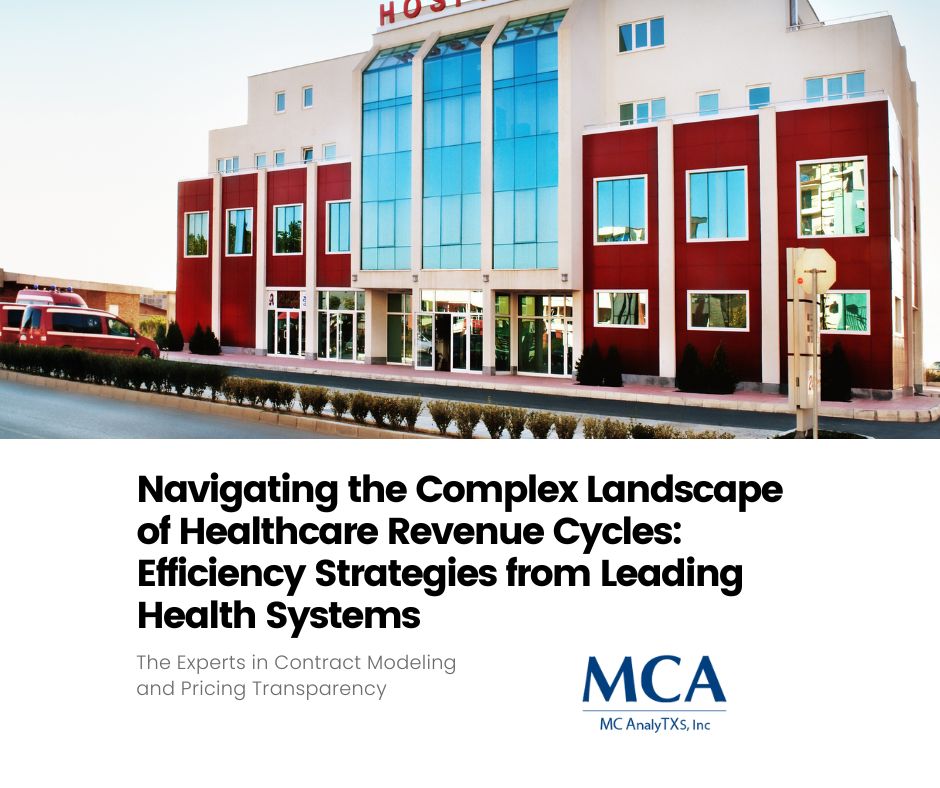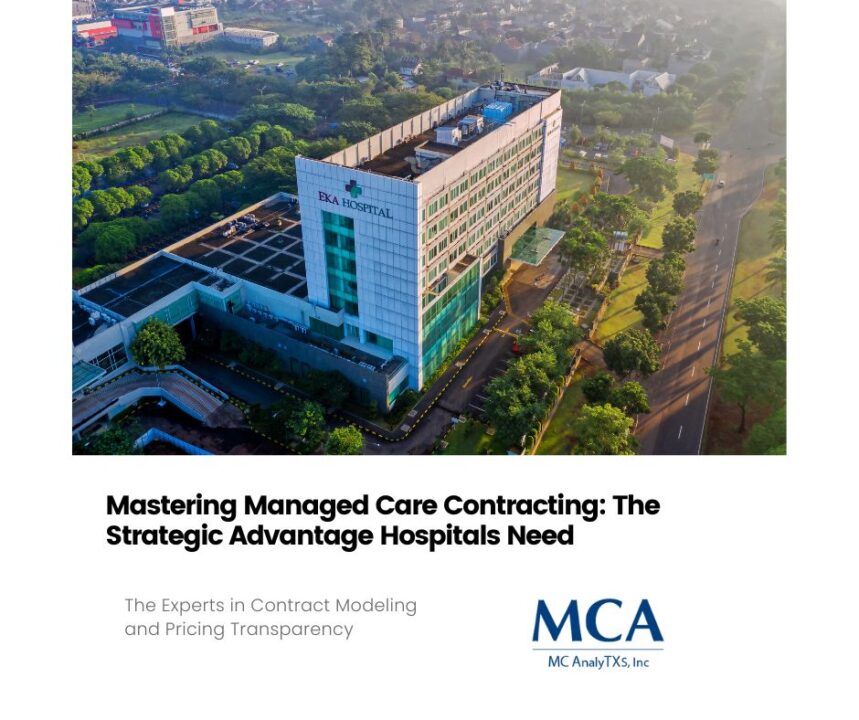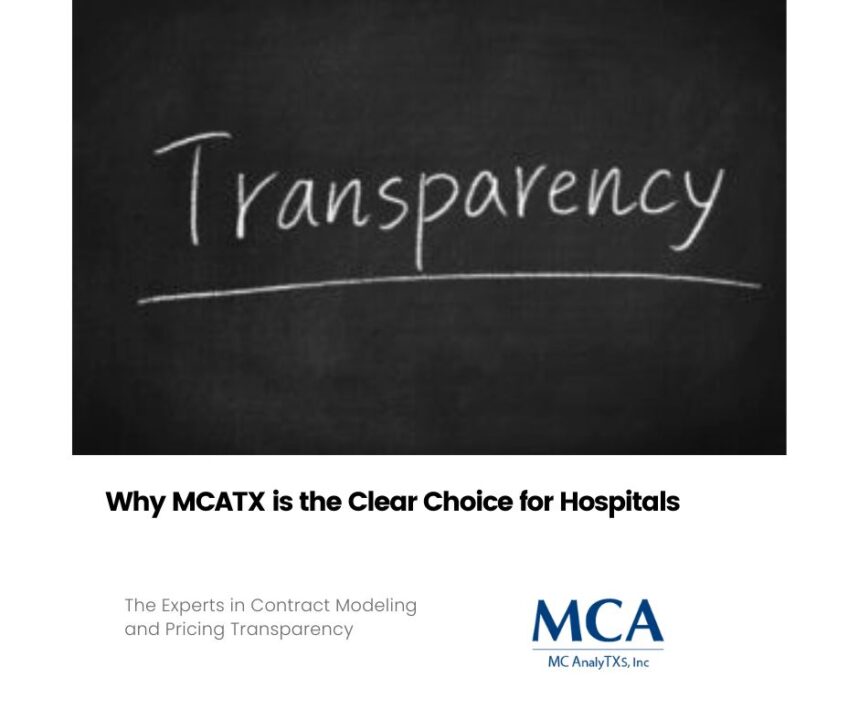
4 Critical Points That Influence Denials in Revenue Cycle Management (RCM)
May 23, 2024
Why Managed Care Directors Should Be Working with an RCM Partner for Financial Efficiency in 2024
May 30, 2024Navigating the Complex Landscape of Healthcare Revenue Cycles: Efficiency Strategies from Leading Health Systems
In the evolving landscape of healthcare, revenue cycle management (RCM) has become increasingly complex. With 73% of leading health systems relying on more than four revenue cycle partners, the need to cut redundancies and maximize efficiency has never been greater. For revenue cycle managers, the challenge is to navigate this intricate web of partnerships while ensuring optimal financial performance.
The Evolving Landscape of Healthcare Revenue Cycles
Healthcare revenue cycles have transformed dramatically over the past decade. With the advent of advanced technologies and an increasing focus on patient-centric care, health systems now require more sophisticated and integrated RCM solutions. The reliance on multiple revenue cycle partners stems from the need to handle various facets of the revenue cycle, such as billing, coding, patient intake, and collections, each requiring specialized expertise.
Challenges Faced by Health Systems with Multiple Revenue Cycle Partners
While having multiple partners can provide specialized solutions, it also introduces several challenges. Here are some of the key issues faced by health systems:
- Increased Complexity: Managing multiple partners can lead to a convoluted revenue cycle, making it difficult to maintain a clear and efficient workflow.
- Communication Gaps: Different partners often use varied communication channels and protocols, leading to miscommunication and data silos.
- Redundancy and Overlaps: With several partners handling overlapping functions, there’s a risk of redundancy, which can waste resources and inflate costs.
- Data Integration Issues: Integrating data from multiple sources can be problematic, leading to inconsistencies and errors in financial reporting.
Strategies Employed by Leading Health Systems
Despite these challenges, leading health systems have adopted several strategies to streamline their revenue cycles and enhance efficiency:
Integrated Technologies
Adopting integrated technologies is crucial for a seamless revenue cycle. By leveraging platforms that offer end-to-end RCM solutions, health systems can ensure better data flow and communication between different partners. Technologies like Electronic Health Records (EHR) and Revenue Cycle Management Software can centralize data, reducing redundancy and improving accuracy.
Streamlined Processes
Streamlining processes involves re-evaluating existing workflows and eliminating unnecessary steps. Leading health systems often conduct comprehensive audits to identify bottlenecks and areas of redundancy. Simplifying these processes can lead to significant improvements in efficiency and reduce the burden on staff.
Strategic Partnerships
Selecting the right partners is essential for optimizing the revenue cycle. Leading health systems focus on building strategic partnerships with vendors who offer complementary services. This approach ensures that each partner adds unique value, minimizing overlaps and fostering a collaborative environment.
Practical Advice for Revenue Cycle Managers
For revenue cycle managers looking to optimize their partner ecosystem, here are some actionable steps:
- Conduct a Comprehensive Audit: Evaluate your current revenue cycle processes and partners. Identify areas of redundancy and inefficiency.
- Leverage Integrated Technologies: Invest in RCM platforms that offer comprehensive solutions and integrate seamlessly with your existing systems.
- Simplify Processes: Streamline workflows by eliminating unnecessary steps and incorporating automation where possible.
- Build Strategic Partnerships: Select partners who offer complementary services and foster a collaborative approach.
- Monitor Performance: Continuously monitor the performance of your revenue cycle and make adjustments as needed. Regularly review KPIs and financial outcomes to ensure ongoing improvement.
Conclusion
In the complex world of healthcare revenue cycles, managing multiple partners effectively is crucial for maximizing efficiency and financial performance. By adopting integrated technologies, streamlining processes, and building strategic partnerships, revenue cycle managers can navigate the challenges and achieve significant improvements.
We invite you to share your own experiences and insights on managing multiple revenue cycle partners in the healthcare industry. What strategies have worked for you? How have you overcome the challenges? Let’s continue the conversation and learn from each other.
For more resources and expert tips on optimizing your revenue cycle, stay tuned to our blog and connect with us on LinkedIn.





